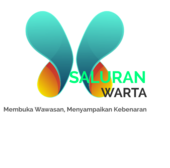Opinion|First Cancer Threatened Her Life. Then Came Medical Freedom.
https://www.nytimes.com/2025/03/29/opinion/medical-freedom-cancer-rfk.html
You have a preview view of this article while we are checking your access. When we have confirmed access, the full article content will load.
In 2007, more than 1,440,000 Americans were diagnosed with cancer. Dawn Kali was one of them. Then in her mid-30s and raising three kids, Ms. Kali’s natural warmth and openness made her a popular waitress at the raw-food restaurant where she worked in San Francisco. When her doctor told her she had Stage 1 breast cancer, the fact that survival rates for her cancer type were in excess of 90 percent (and rising) did little to soften the emotional blow. Ms. Kali knew what cancer entailed: a barrage of medical treatments that seemed to sap people of their quality of life. And then they’d die anyway. “That’s not going to be me,” she swore.
Ms. Kali had grown up in a family that revered the principles of all-natural living. She liked her burritos G.M.O.-free and her milk raw. She was wary of medical interventions that exposed the body to chemicals and radiation. Sometimes she suspected that the entire medical system had been captured by special interests. She wanted health care that felt caring, not the impersonality and inaccessibility that she encountered in hospitals. And so while she agreed to undergo surgery to excise her tumor, she declined to follow up with an oncologist. Instead, she began searching for alternatives.
While only a small percentage of people diagnosed with cancer reject standard medical care entirely, surveys have found that one in five Americans has used alternative medicine in place of conventional medicine at some point. Nearly one in three Americans has reported avoiding doctors, often owing to distrust of the medical system or a history of negative experiences.
In her quest for options outside traditional medicine, Ms. Kali found herself part of what has become known as the health freedom movement. In the past 25 years, the movement has stitched together yoga moms, flag-waving anti-maskers, alternative healers, disenchanted doctors and other fellow travelers who believe that the government has no business meddling in personal health decisions. With the installment of Robert F. Kennedy Jr. as health secretary, what was once a fringe coalition of grass-roots activists and libertarians now controls the regulatory halls of power.
Mr. Kennedy is a vaccine critic and conspiracy theorist who has accused federal health agencies of widespread corruption for decades. He’s suggested that Bill Gates might be controlling people with microchips and doubts that H.I.V. is the “sole cause” of AIDS. President Trump invited him to “go wild” on U.S. health infrastructure, and he has: This week, Mr. Kennedy announced plans to cut 10,000 jobs from the Department of Health and Human Services. The news follows an announcement that Mr. Kennedy’s H.H.S. hired a vaccine skeptic to lead a major study on vaccines and autism. The health freedom hurricane is about to envelop the entire country.
How did we get here? Beginning in the late 1990s, a network of libertarian organizations and donors funded health freedom lobbying groups aimed at pushing health care into the free market. The lobbying was part of the larger libertarian project to limit government and to strategically counteract the health care policies proposed by Democratic administrations. These far-right libertarians courted left-leaning anti-vaccine activists (a small but growing movement) and professional alternative healers whose culture was transitioning from New Age dippiness to a more focused entrepreneurialism.

 2 months ago
33
2 months ago
33

















































